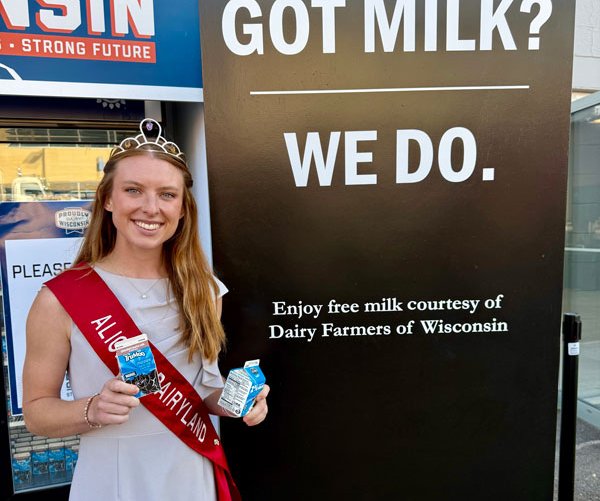Farmers are busy in their fields and with newborn animals, and signs of summer are popping up everywhere around Wisconsin, which means that soon it will be time to celebrate June Dairy Month! Let’s learn a little about how our state came to be known as America’s Dairyland.
Around the time Wisconsin became a state in 1848, it was known as America’s breadbasket, with one sixth of the nation’s wheat being harvested here. According to the Wisconsin Historical Society (WHS), settlers in Wisconsin chose wheat because it did not require much money, was relatively easy to grow, and could be harvested twice a year.
However, continuous planting of that single crop depleted the soil, and in the 1860s, damage caused by chinch bugs further decimated the wheat yield. Needing to change course, Wisconsin’s farmers started adding dairy cows to their business approach and finding success. Our climate was ideal for dairy cattle and the soil was better suited for feed crops.
Well before the 1860s, some Wisconsinites were making cheese. According to WHS, Charles Rockwell of Koshkonong was one of the earliest in 1837, and Anne Pickett established a cheese factory in Lake Mills in 1841, using milk from neighbors’ cows. However, before Wisconsin’s dairy boom, New York was the leading dairy state. Then many New Yorkers moved here, bringing knowledge and skills for dairying on a commercial scale. At this time, Wisconsin dairies primarily produced cheese because it kept longer than the butter that was being made in other dairy-producing states.
Seeing a fast-growing opportunity for farmers, the University of Wisconsin began researching ways to support the dairy industry. William A. Henry, the UW’s first professor of agriculture, used the school’s farm to study the use of round silos to feed cattle during winter, and Professor Stephen Babcock developed the first test for butterfat content in milk. The university also started a “short course” to educate farmers about the dairy industry.
William Dempster Hoard, the 16th Governor of Wisconsin, was also instrumental to the success of Wisconsin dairy farming. Hoard started the Wisconsin Dairyman’s Association in Watertown in 1872 to provide marketing for the industry along with education in new dairying methods through its publications and meetings. Hoard’s Dairyman was established in 1885 and quickly became the nation’s leading dairy magazine.
By 1899, more than 90% of Wisconsin farms raised dairy cows. By 1915, Wisconsin had become the leading dairy state in the nation, producing more butter and cheese than any other state.
Fast forward more than 100 years and Wisconsin still maintains the title of America’s Dairyland. Today, our state is home to nearly a quarter of the nation’s dairy farms, 99% of which are family-owned. Our farm families understand the importance of keeping cows healthy and comfortable, as well as managing land and water resources. Our 5,300 dairy farms house about 1.28 million cows, which are milked and cared for using the latest technology to ensure cow comfort and product safety.
Over the past nearly 11 months of my time as the 77th Alice in Dairyland, I have been able to meet and talk with dairy professionals across the state. They each have a story to tell, a history to share, and a career to be proud of. This June Dairy Month and beyond, join me in thanking the dedicated individuals who make us America’s Dairyland! Visit https://www.wisconsindairy.org/june-dairy-month for more information and to find a June Dairy Month event near you.
— Halei Heinzel is the 77th Alice in Dairyland, Wisconsin’s agriculture ambassador who works with media professionals to educate consumers about the importance of agriculture to Wisconsin’s economy and way of life. She can be reached at halei.heinzel@wisconsin.gov.





